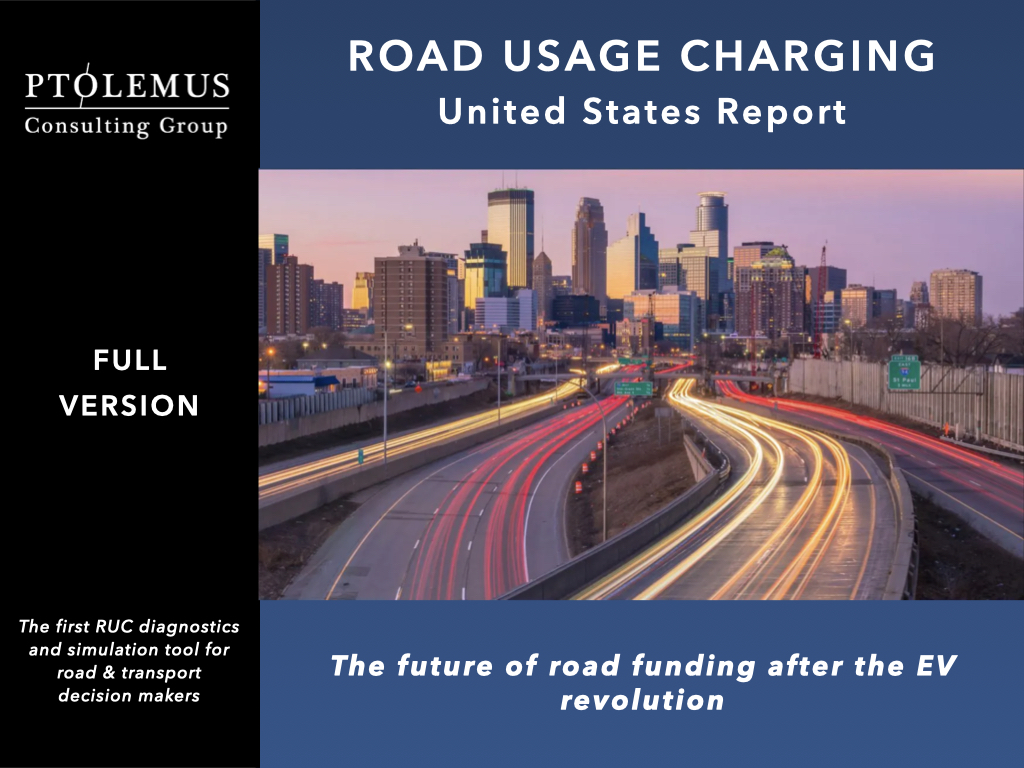Key Drivers of RUC in the US: The evolution of mobility

As we discussed in the first part of this series on key drivers of RUC in the US, the evolution of mobility, such as increased vehicle fuel efficiency and mass adoption of electric vehicles, is another motivating factor in the adoption of RUC schemes in the US.
Given that the primary road funding source is the motor fuel tax, the evolution of mobility we have seen in recent years targeted at lowering vehicle emissions—while beneficial to the environment—is detrimental to road funding in the US. Ever improving vehicle fuel efficiency along with the increasing popularity of electric vehicles means less fuel taxes are paid and less funding available. For example, converting an ICEV to an EV results in a state needing to replace between $2000 and $3500 in fuel tax revenues over the vehicle’s life.
As well, vehicle miles traveled in the United States continues to grow. This on the surface may seem like a positive, generating more fuel tax and more road funding revenue. However, as previously mentioned, more and more of these vehicles are either electric or more fuel efficient. These miles are also not evenly spread across the nation and are leading to increased congestion. To manage these increases to congestion and the maintenance requirements attached, states must continually invest in their road network, requiring new sources of funding to support such efforts.
 The previous examples could be seen as being disincentives for the motor fuel tax as much as they are drivers for RUC. One factor that is a true positive driver of RUC adoption in the US is the growth of connected vehicles. More than 90% of new vehicles are connected. This connectivity enables states to explore new road usage-based funding solutions at a considerably lower cost. This cost reduction is due to the fact that a connected vehicle can provide distance traveled information to calculate a driver’s road usage fee without requiring the car to have an external device. This not only lowers the set-up and operations costs of RUC but also reduces program friction as customers do not need to go through the manual process of installing aftermarket devices.
The previous examples could be seen as being disincentives for the motor fuel tax as much as they are drivers for RUC. One factor that is a true positive driver of RUC adoption in the US is the growth of connected vehicles. More than 90% of new vehicles are connected. This connectivity enables states to explore new road usage-based funding solutions at a considerably lower cost. This cost reduction is due to the fact that a connected vehicle can provide distance traveled information to calculate a driver’s road usage fee without requiring the car to have an external device. This not only lowers the set-up and operations costs of RUC but also reduces program friction as customers do not need to go through the manual process of installing aftermarket devices.
The evolution of mobility in the forms of increased vehicle fuel efficiency, growth in popularity of electric vehicles, vehicle miles traveled and the growing market share of connected vehicles, are all pushing forward the broad adoption of RUC in the US through various factors.
To learn more about RUC see our next post in this series on the key drivers of road usage charging in the US on Road Infrastructure Needs, or review our in-depth market research reports on RUC and ETC.

